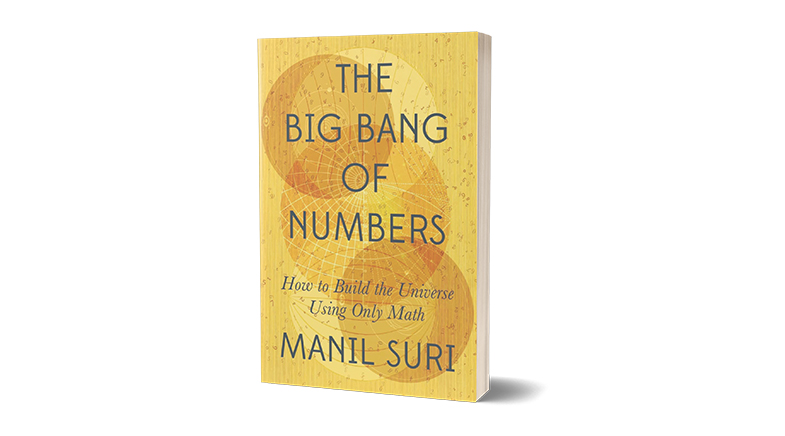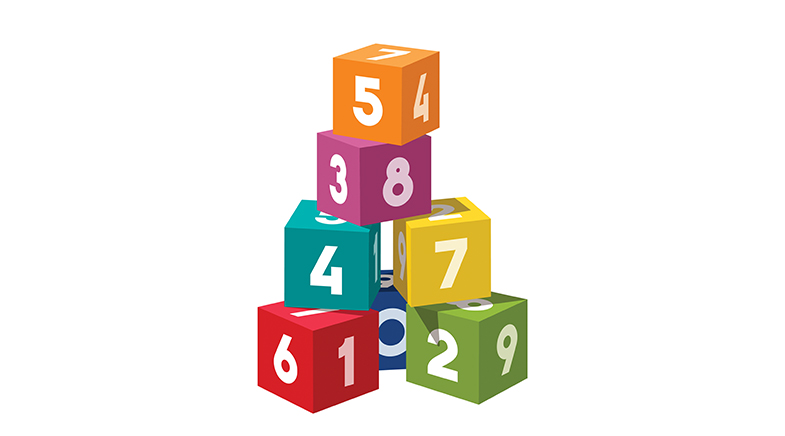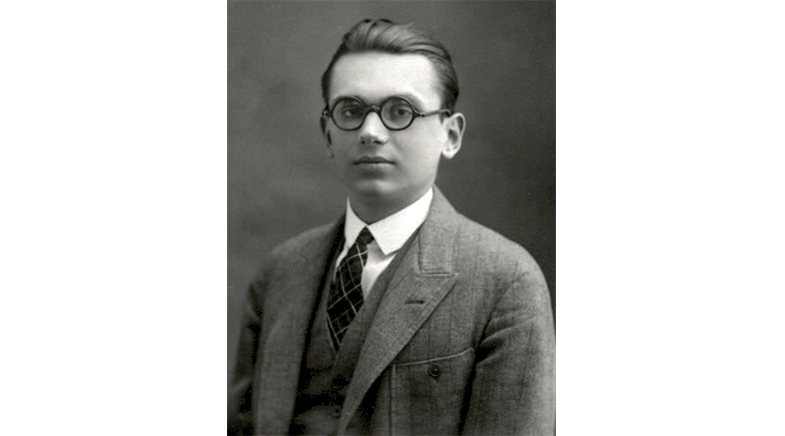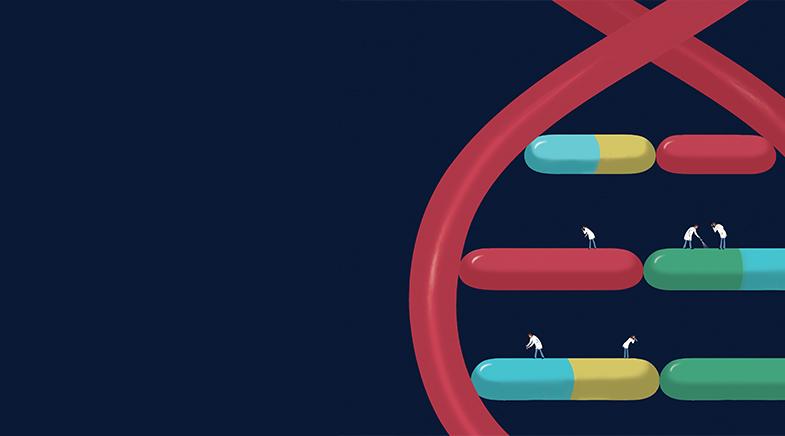Building blocks out of nothing
-
- from Shaastra :: vol 01 issue 06 :: Nov - Dec 2022

Manil Suri wants to strip readers of the almost natural wariness, bordering on fear, of numbers.
At the end of Chapter 30 in The Big Bang of Numbers, Manil Suri has a few lines that might just have summed it all up: "A computer might be content to remain confined... But we've already caught a glimpse beyond. Our need to know as curiosity-filled humans urges us on."
I’ve left out the context Suri intends, because there's an idea buried here that I want to hold on to. Even if they now beat us at chess, even if they can connect you instantly to your cousin in the remote Kerguelen Islands, even if you might argue about anthropomorphising them so that they are "content", whatever computing devices we humans have built have their limits. In contrast, our own imaginations know no limits. Wherever we reach, we see beyond, and that beyond fills us with curiosity. It is that essential curiosity that makes us human.
That, for me, is the spirit in which Suri wrote this book.
There's a simple question he sets out to address: Can we start from essentially nothing — and I really mean nothing, as does Suri — and build the whole edifice of numbers and mathematics as we know it today? Can we see that beginning as the Big Bang of Numbers?
Well, the way to find out is to do the building. Up from nothing, we might conceive the idea of one thing, whatever it is. It seems intrinsically different from our original nothing, sure. But maybe you think there's something also intrinsically trivial about this move from zero to one. Yet, Suri wants to persuade you of the leap of imagination it took to make that move. What got humans to start counting? Was it quite as trivial as all that?
Can we start from essentially nothing and build the whole edifice of numbers and mathematics as we know it today?
OK, maybe you don't necessarily have to agree that it was a leap. The point is the edifice, for which this is the tiny foundation stone. For once you have one thing, whatever it is, you look beyond because you are — indeed — one of those curiosity-filled humans. Soon you have two. Then three, and four, on and on. That edifice is growing, and I could tell you that that’s the story of this book and stop here.
Except that the edifice turns out to be complex — I use that word deliberately, as you will see — and beautiful and profound and much more, and it raises all manner of questions as it gets built, brick by mathematical brick. And that is really the story of this book.
HAPPY, GRUMPY NUMBERS
Suri wants to give numbers life. They speak to each other as they are born, and to their creator. He does this with a definite purpose. He wants to strip readers of the almost natural wariness, bordering on fear, of numbers that so many of us hold tight. If we can see them as little beings with whims and fancies just like we nurture, Suri clearly believes, perhaps we'll start losing that fear. And that’s just what he imbues numbers with: whims and fancies. They’re happy, grumpy, voluble, jealous... much as we humans are.

Take this that he attributes to a particular number: "Of late, she's taken to threatening that if nothing’s done, she might have the complexes storm the line and occupy the units assigned to reals" — complex and real being two specific number species.

A formidable soul, this lady.
Especially in the first half, we encounter plenty of expressions like this. I see where they are coming from and why Suri uses them. He wants to bring mathematics closer to readers who find it hard to grasp, even intimidating. He wants to show how real the subject really is. After a while, though, the expressions I mentioned collectively add up — pun intended — to my complaint about this book. Give numbers personality and even homes – "units" and "condos" make appearances — that will mould them into less abstract and more approachable concepts, sure. But the cutesy anthropomorphising starts to get tedious, not least because it sometimes seems forced, as with the lady above.
Still, there's enough here to get us to look beyond. I think Suri succeeds in what he sets out to do. But maybe it's hard work, going by these telling sentences a little later in the book. "The problem is that everything so far has been entirely conceptual," Suri muses. "That's great in terms of flexibility, but you worry whether math can ever break free from the realm of ideas. Will it ever enable you to construct anything tangible?"
Suri's answer right there is "no". But that's only a small bump in the road. The book chugs along with a charming relentlessness. Here's the storey in the building about integers; there's the one about reals; bring in the imaginaries and give tangible meaning to those mysterious "complex" numbers; move to planes and higher dimensions. Keep infinity in mind. Show how straight lines as geodesics explain gravitation attraction, then work out the mathematics of such attraction.
FOREVER INCOMPLETE
And just when you might think there's a finish line approaching, Suri introduces the great Kurt Gödel and his insight that mathematics is forever Incomplete. Yes, given how profoundly ground-breaking Godel's insights were, I believe the word deserves a capital "I".
No, we learn, mathematics doesn't "finish" in any sense.
And yet, and yet... even after making his case for the approachability and appeal of mathematics, Suri does want to remind us that it's still mathematics. For those who might start extrapolating all this to what's beyond — we do look beyond, don't we? — he offers this caution: "Let me be clear that Gödel's work only addresses the incompleteness of certain well-defined mathematical systems; trying to apply his theorem to other fields, or to ‘prove' that life in general can't be flawless, is nonsense."
Then again, it feels a little reassuring to know that life isn't flawless.
Then again, too, Suri builds and builds until, near the end, he wants us to think of what mathematics has to say about what life itself means. For example, startlingly simple rules, we find, "can be set up to explain the spontaneous appearance of... spots on a leopard, stripes on a zebra, human fingerprints, the complex patterns in which birds flock".
And yet, it's not as if a zebra embryo, say, is in any sense "consciously trying to generate" those stripes. Instead, such patterns are "unpremeditated, self-arising". There's a mathematical term for this: they are "emergent".

And there are times when intelligence itself is emergent. Among others, Suri offers the astonishing example of ants that reach out into thin air to form a bridge for their mates. Even trying to comprehend something like this raises a "pivotal" question. "If intelligence can be an emergent phenomenon, could life be as well?"
Suri introduces us to the great Kurt Gödel (pictured above) and his insight that mathematics is forever incomplete.
There's more. But maybe you should find out for yourself how Suri answers that question. (Or does he?) Because to me, this is a climax of sorts to this book. So much structure, so much interplay between so many mathematical concepts, and it brings us to a pivotal question that is profound, and yet in some sense, simple indeed.
Life, from mathematics. What a thought. What a glimpse beyond.
Once a computer scientist, Dilip D'Souza now writes on mathematics, among other things.
Have a
story idea?
Tell us.
Do you have a recent research paper or an idea for a science/technology-themed article that you'd like to tell us about?
GET IN TOUCH














